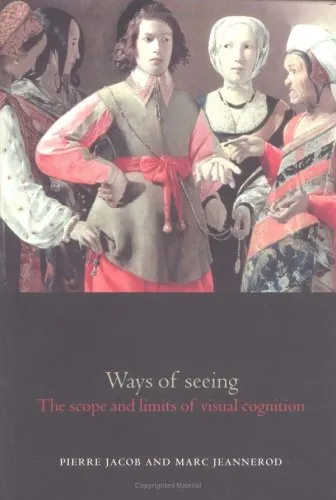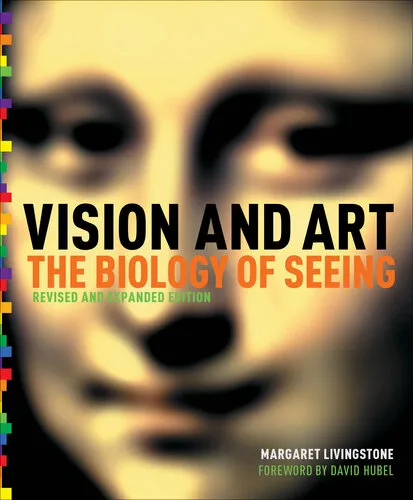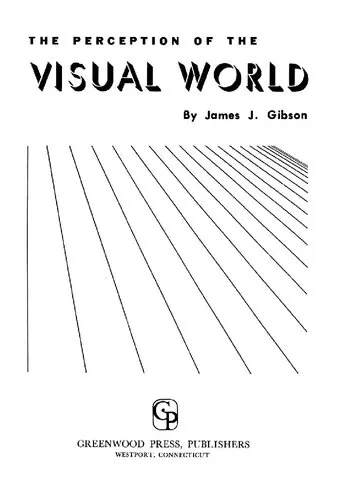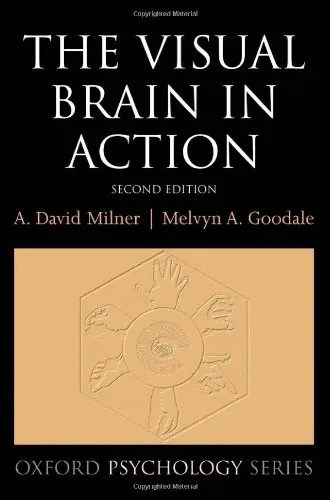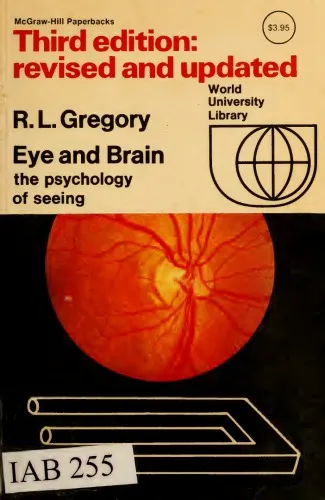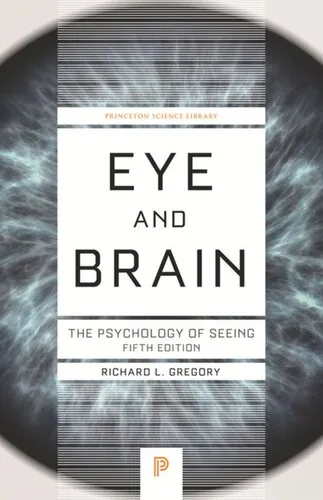Ways of seeing: the scope and limits of visual cognition
4.7
بر اساس نظر کاربران

شما میتونید سوالاتتون در باره کتاب رو از هوش مصنوعیش بعد از ورود بپرسید
هر دانلود یا پرسش از هوش مصنوعی 2 امتیاز لازم دارد، برای بدست آوردن امتیاز رایگان، به صفحه ی راهنمای امتیازات سر بزنید و یک سری کار ارزشمند انجام بدینRelated Refrences:
خلاصهای جامع از کتاب "Ways of Seeing: The Scope and Limits of Visual Cognition"
کتاب "Ways of Seeing: The Scope and Limits of Visual Cognition" به قلم پییر ژاکوب و مارک ژانرود یک اثر عالی در زمینه شناخت بصری است. این کتاب به بررسی چگونگی و محدودیتهای شناخت بصری در انسان میپردازد و تلاش میکند از طریق رویکردهای مختلف علمی و فلسفی، این موضوع پیچیده را تحلیل نماید.
خلاصه کلی کتاب
در این کتاب، ژاکوب و ژانرود با دقت به تبیین عملکرد سیستم بصری انسان، از چشمها تا مغز، میپردازند. آنها چگونگی فرایند پردازش اطلاعات تصویری در مغز را شرح داده و تفاوتهای میان مشاهده و تفکر را بررسی میکنند. یک نکته کلیدی در این کتاب، تحلیل روابط میان ادراک حسی و شناخت شناختی است که به زیبایی نشان میدهد که چگونه آنچه میبینیم و آنچه میاندیشیم بهصورت همزمان و یا به ترتیبی منطقی درک میشود.
نکات کلیدی
- درک اهمیت تمایز بین ادراک و cognition بصری
- شناخت محدودیتهای عملکرد سیستم بصری در موقعیتهای مختلف
- تحلیل نقش تجربههای گذشته و حافظه در پردازش بصری
اهمیت این کتاب
این کتاب برای دانشجویان، محققان و علاقمندان به علوم شناختی و فلسفه بصری بینهایت سودمند است. ترکیب جذاب تحقیقات علمی با دیدگاهی فلسفی، این کتاب را به یکی از منابع ارزشمند درک شناخت بصری تبدیل کرده است که میتواند زمینهساز پژوهشهای جدید و تئوریهای نوین باشد.
جملات معروف از کتاب
“دیدن، راهی برای ساختن دنیای منحصر به فرد ذهن است.”
“تفاوت بین آنچه میبینیم و آنچه میدانیم، همان تفاوت بین تصویر و فکر است.”
چرا این کتاب مهم است
کتاب "Ways of Seeing: The Scope and Limits of Visual Cognition" با هدف ارتقاء درک نظری از فرایندهای بصری، نه تنها به بررسی مکانیزمهای شناختی پرداخته بلکه بر روی پیامدهای روانی و اجتماعی آن نیز تشریح علمی ارائه کرده است. این کتاب با نزدیک ساختن شکاف میان تحقیقات علوم تجربی و تحلیلهای فلسفی، نقشی برجسته در توسعه دیدگاههای بینرشتهای ایفا میکند.
Welcome to a comprehensive exploration of visual cognition in "Ways of Seeing: The Scope and Limits of Visual Cognition," authored by Pierre Jacob and Marc Jeannerod. This book delves into the intricate processes by which humans perceive, interpret, and understand the world through visual means, offering an enlightening journey into the psychological and philosophical dimensions of seeing.
Summary
The book "Ways of Seeing" embarks on an intellectual voyage that dissects the multifaceted nature of visual perception. It meticulously examines how the mind deciphers visual stimuli, translating raw sensory data into cohesive mental representations. Authors Pierre Jacob and Marc Jeannerod integrate insights from cognitive neuroscience, psychology, and philosophy to unravel the mysterious mechanisms underpinning visual cognition.
The narrative is structured around the dichotomy of 'seeing' as not merely a passive reception of images but as an active cognitive process. It delves into how visual experiences are fundamentally shaped by cognitive functions such as attention, memory, and expectation. The book also investigates the limits of our visual system, exploring instances of blindness, illusions, and visual disorders that shed light on how we produce and comprehend visual knowledge.
Employing an interdisciplinary approach, Jacob and Jeannerod skillfully bridge empirical research with theoretical analysis, creating a rich tapestry that challenges and expands the reader's understanding of human sight. Throughout its chapters, the book confronts complex questions, such as how language and culture influence what we see and how technology and artificial intelligence may alter our visual cognitions.
Key Takeaways
- Visual cognition is an active process involving various cognitive functions, not a mere passive reception of visual information.
- Attention, memory, and culture significantly shape our visual experiences, influencing what individuals see and perceive.
- Understanding the limitations of the visual system can reveal much about visual perception’s complexity and adaptability.
- The integration of cognitive neuroscience and philosophical perspectives offers a deeper insight into the human experience of seeing.
Famous Quotes
"To see is not merely to open one’s eyes, but to engage in a profound cognitive dance with sensory data."
"Our perceptions extend beyond physical sight, encompassing an intricate web of expectations, memories, and cultural overlays."
Why This Book Matters
In an age where images dominate our means of communication and understanding, "Ways of Seeing" holds significant relevance. The book offers crucial insights into the cognitive processes that govern our interaction with the visual world, thus enabling a deeper appreciation for the complexity of human perception. Its interdisciplinary approach encourages readers to think beyond traditional disciplinary boundaries, prompting them to consider how advances in cognitive science can illuminate age-old philosophical debates about perception and reality.
Additionally, Jacob and Jeannerod’s examination of visual cognition raises important questions about the impact of digital media and virtual realities on our perceptual abilities. As we increasingly encounter augmented and virtual realities, understanding the functioning and limits of our visual systems becomes ever more pertinent. This book lays a strong foundational understanding, vital for anyone interested in the intersection of technology, philosophy, and cognitive science.
دانلود رایگان مستقیم
شما میتونید سوالاتتون در باره کتاب رو از هوش مصنوعیش بعد از ورود بپرسید
دسترسی به کتابها از طریق پلتفرمهای قانونی و کتابخانههای عمومی نه تنها از حقوق نویسندگان و ناشران حمایت میکند، بلکه به پایداری فرهنگ کتابخوانی نیز کمک میرساند. پیش از دانلود، لحظهای به بررسی این گزینهها فکر کنید.
این کتاب رو در پلتفرم های دیگه ببینید
WorldCat به شما کمک میکنه تا کتاب ها رو در کتابخانه های سراسر دنیا پیدا کنید
امتیازها، نظرات تخصصی و صحبت ها درباره کتاب را در Goodreads ببینید
کتابهای کمیاب یا دست دوم را در AbeBooks پیدا کنید و بخرید
1623
بازدید4.7
امتیاز0
نظر98%
رضایتنظرات:
4.7
بر اساس 0 نظر کاربران
Questions & Answers
Ask questions about this book or help others by answering
No questions yet. Be the first to ask!
